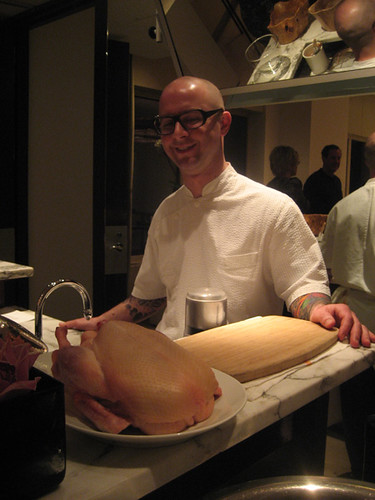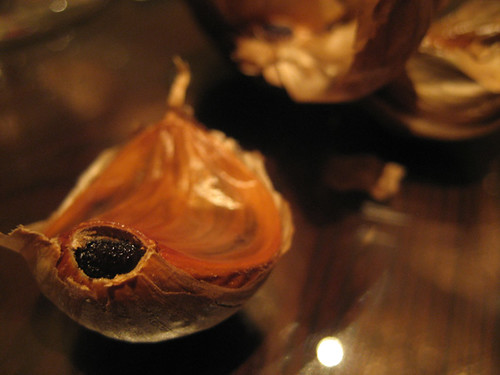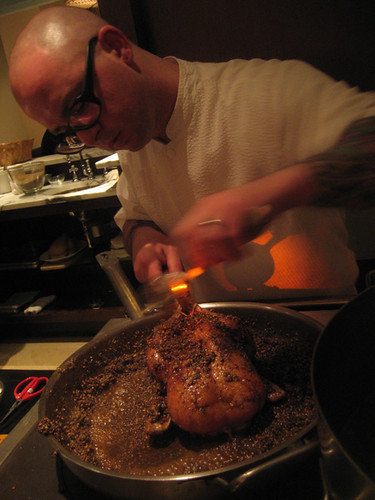“My other piece of advice, Copperfield,” said Mr. Micawber, “you know. Annual income twenty pounds, annual expenditure nineteen nineteen six, result happiness. Annual income twenty pounds, annual expenditure twenty pounds ought and six, result misery. The blossom is blighted, the leaf is withered, the God of day goes down upon the dreary scene, and— and in short you are for ever floored. As I am!”

Small amounts can make all the difference. I had two meals recently at places which have enjoyed considerable praise, and found myself a bit of the exception to the chorus of delight. Yet when I totaled up the experience, I found myself tipped back toward praise by the fact that the prices at both were so reasonable, on average about two bucks less per item than I might have expected. This not only meant I could order more (which gave them more of a chance to wow me with at least one thing), but that I didn’t feel screwed on the way out, my grumbles given time to ferment into a full-fledged pan by the time I sat down here. Instead, I felt inclined to give both the benefit of the doubt— and so I will.
The Purple Pig has enjoyed rapturous reviews for its quality bar food, or perhaps its quality food in an after-work bar atmosphere, to be more precise. Certainly by the standards of Michigan Avenue, it’s a huge gastropubonomic advance; I actually worked in that building, eons ago, so the idea of anything better than a Fluky’s franchise in that area seems fairly miraculous to me.

That said, after my interview at Crain’s I popped in there for lunch and had three things, all of which were good, none of which rose to the sort of praise lavished on it by, say, Steve Dolinsky, who tweeted that no opening since Avec had excited him as much. I had one of the housemade salamis, a bowl of salt-cured beets with whipped goat cheese, and the widely-praised neck bones in red gravy. (No actual bones, just some tender pork shoulder.) The salami was pleasant, but didn’t merit comparison with some of the real excellent and funky salami around town; the beets were just absurdly rich, like a beet sundae, and almost too salty to enjoy; the neck bones were the most simply satisfying, like Iberico’s queso de cabra, but simple is the operative word. In short, three things I thought were pretty good, very good for after work bar food perhaps, but nothing that made my eyes open wide with the magic of what I’d just tasted, as I’ve experienced at Avec, The Bristol, Mado, and other places with a fairly similar culinary orientation.

Now, admittedly, maybe I just didn’t have a large enough sample— if one thing wowed me on a typical visit to Avec, say, it was probably one out of six or seven things ordered. Three may not have been enough candy bars to get a golden ticket. Or maybe The Purple Pig is happy where it’s aiming, straight for hearty (and plenty salty to encourage drinking) with a dollop of culinary aspiration, for that after work drinking crowd. The redeeming factor, certainly, is that I walked out of there, after three such quality dishes, with change from a twenty. That is what will encourage me to give it another try— and see if there’s more to it than simply outclassing mozzarella cheese sticks as a spicy, carb-heavy nosh to go with your beer.
* * *

Does it matter to a nice meal if your feeling about the meal is that it reminds you of what you were eating around 1992? I mean, if you enjoyed it in 1992— and I was a working adult in 1992, this is not a matter of an immature palate— shouldn’t you enjoy it again now? Food styles don’t age like hair styles, do they?
Maybe not, but Ceres’ Table felt like a meal I’d have eaten at, say, Oo-La-La 15 or 20 years ago; it had that sort of Northern Italian-influenced feel that was all the thing in the 90s, but now seems very American next to the more authentic Italian food one can find around town. We started with a country pate which was slightly more interesting than a bologna sandwich (the best thing about it was the jam on the plate), and a dull salad with woody bits of shaved artichoke, a dressing crying out for some black pepper bite, and pencil-eraser bits of enoki mushroom. I wouldn’t call it disastrous, simply because I couldn’t get that worked up about it. (There was also a bit of service awkwardness starting with them bringing much too large plates for the pate; since there wasn’t room for that plate and my salad, I, who’d actually ordered the pate, was the one who didn’t get a plate for it.)
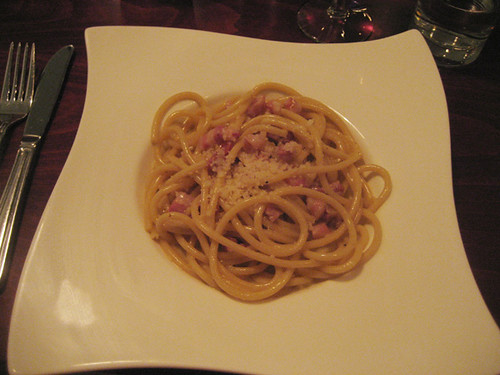
Dinner could only go up from there but thankfully, it did— a lot. I ordered spaghetti carbonara made with duck egg, and it was a beautiful, silky rendition of this classic dish. My mom ordered a braised lamb shank, which was also textbook-perfect (if exactly how this dish would turn out at any restaurant, or, indeed, at my house), accompanied by horseradish-tinged mashed potatoes— which is what prompted these thoughts of 1992, back when garlicking or horseradishing up your mashed potatoes was de rigueur. Even if it seemed like a dated touch, though, I suppose you shouldn’t argue with a dish that turns out very well and makes its purchaser happy, which this one certainly did. Would it really have been better if it had been 2010’s trendy sunchokes or turnips instead? That’s heading toward the territory of the movie mogul Sam Goldwyn’s famous line, “I’m tired of the old clichés! Let’s have some new clichés!”
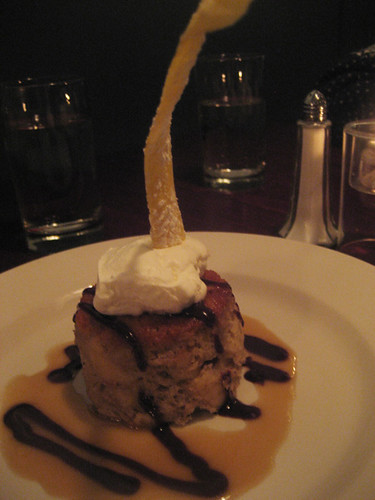
As at Purple Pig, what made one feel tolerant toward a 50-50 meal at this point was the fact that everything was so reasonable; even the lamb shank was, I think, only $18, which is halfway to a 1992 price for a 1992 dish. At higher prices I’d have been ready to quit gambling after entrees, but when the dessert card came out with the magic words “All desserts $5,” which is at least $2 less than I might have expected, I gave in to my kids and let them order a couple of things.
The little buggers were right. Pastry chef Leticia Zenteno has figured in much of the praise Ceres’ Table has received so far, including the only nomination it got in the Time Out Chicago Eat Out Awards, and it’s absolutely deserved, she’s a star. To reach that $5 price point, the desserts are on the smallish side, but I have no problem with them not being Cheesecake Factory-huge; what matters is that they were brightly flavored, well-balanced and beautiful to look at (and if you get three for $15 instead of two for $14, then surely you came out ahead in every way possible). A nectarine tart, however out of season, was sunny in the mouth, a banana bread pudding light and fluffy.
Lower prices are a bonus, but in the end, the food has to be worth spending money on at all. Zenteno’s desserts would tip you back toward happiness at a restaurant that charged considerably more for each dish than Ceres’ Table does.



 Posted in
Posted in 









